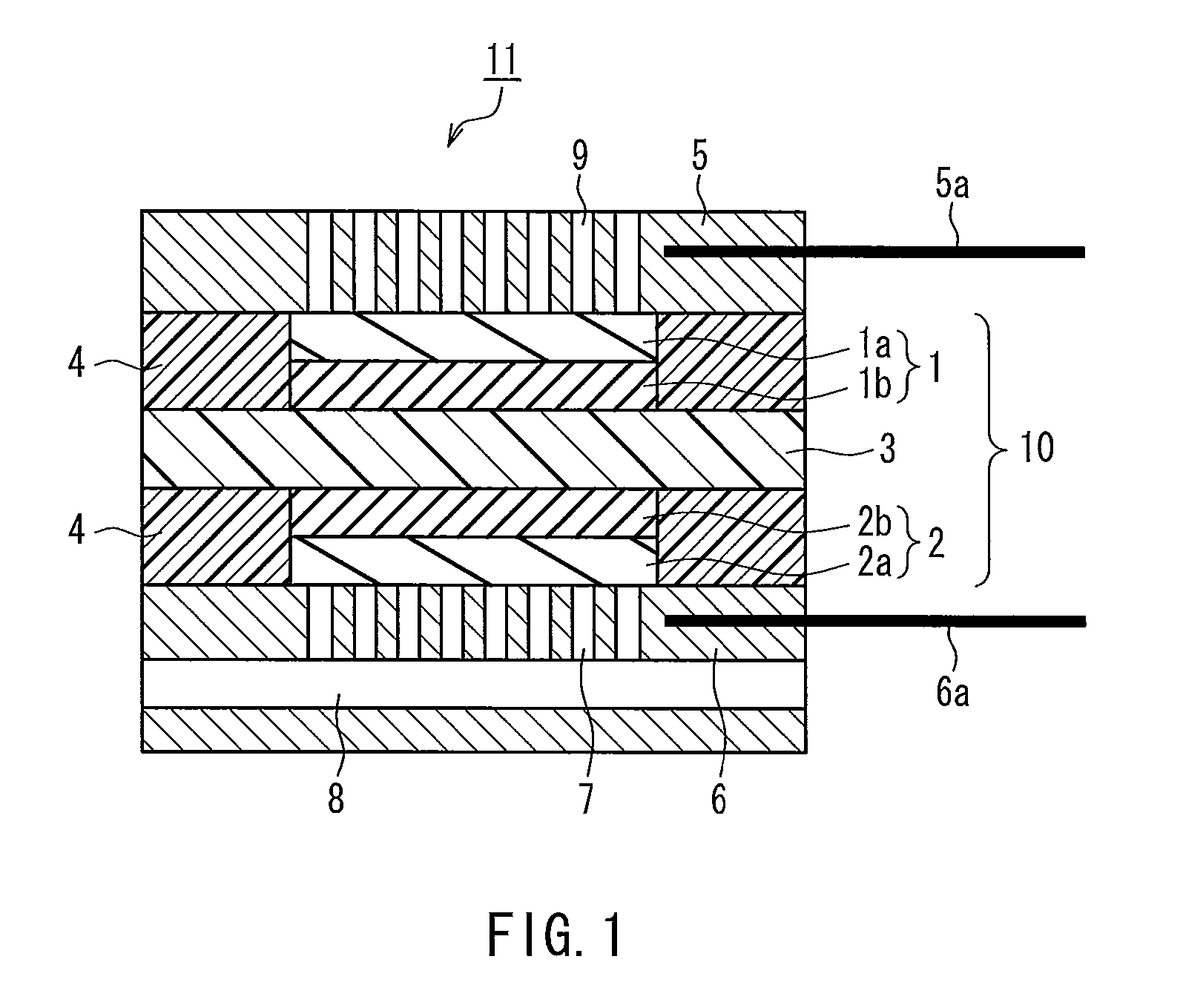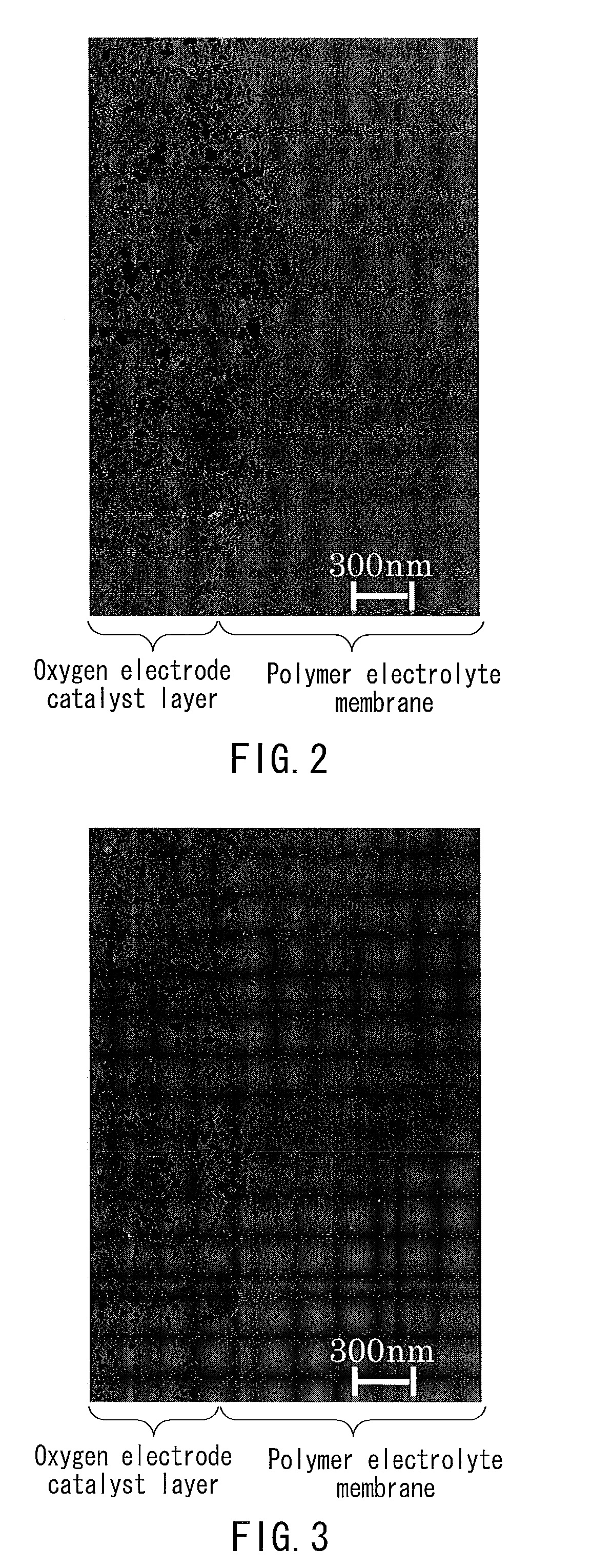Membrane electrode assembly and polymer electrolyte fuel cell
a technology of membrane electrodes and fuel cells, applied in cell components, metal/metal-oxide/metal-hydroxide catalysts, physical/chemical process catalysts, etc., can solve the problems of fuel cell output not being maintained, fuel cell output not being sufficiently suppressed, and reducing output, etc., to achieve high power generation performance, high durability, and suppress the effect of metal catalysts of the catalyst layer
- Summary
- Abstract
- Description
- Claims
- Application Information
AI Technical Summary
Benefits of technology
Problems solved by technology
Method used
Image
Examples
example 1
[0067]A catalyst layer paste was prepared by adding 10 parts by weight of citric acid (available from Aldrich Chemical Co. Inc.) as a complex-forming agent to 100 parts by weight of platinum-supporting carbon (TEC10E50E available from Tanaka Kikinzoku Kogyo K.K., platinum-to-carbon black weight ratio: 50:50), in which platinum serving as a catalyst was supported on carbon black serving as a support, and 1200 parts by weight of polyperfluorosulfonic acid resin solution (Nafion available from Aldrich Chemical Co. Inc.) as a proton conductive polymer electrolyte, and thoroughly stirring them to uniformly disperse them. This catalyst layer paste was applied onto a polyamide sheet such that the amount of platinum catalyst applied would be 0.5 mg / cm2. After drying, the sheet was cut into a 3 cm by 3 cm square, producing an oxygen electrode (oxygen electrode catalyst layer). Likewise, a fuel electrode (fuel electrode catalyst layer) was produced in the same manner as the oxygen electrode w...
example 2
[0070]A unit cell for a fuel cell was produced in the same manner as in Example 1, except that 10 parts by weight of ethylenediaminetetraacetic acid (EDTA available from Dojindo Laboratories) was used in place of citric acid.
example 3
[0071]A unit cell for a fuel cell was produced in the same manner as in Example 1, except that 10 parts by weight of acetylacetone (available from Wako Pure Chemical Industries, Ltd.) was used in place of citric acid.
PUM
| Property | Measurement | Unit |
|---|---|---|
| lattice spacing | aaaaa | aaaaa |
| BET specific surface area | aaaaa | aaaaa |
| temperature | aaaaa | aaaaa |
Abstract
Description
Claims
Application Information
 Login to View More
Login to View More - R&D
- Intellectual Property
- Life Sciences
- Materials
- Tech Scout
- Unparalleled Data Quality
- Higher Quality Content
- 60% Fewer Hallucinations
Browse by: Latest US Patents, China's latest patents, Technical Efficacy Thesaurus, Application Domain, Technology Topic, Popular Technical Reports.
© 2025 PatSnap. All rights reserved.Legal|Privacy policy|Modern Slavery Act Transparency Statement|Sitemap|About US| Contact US: help@patsnap.com



